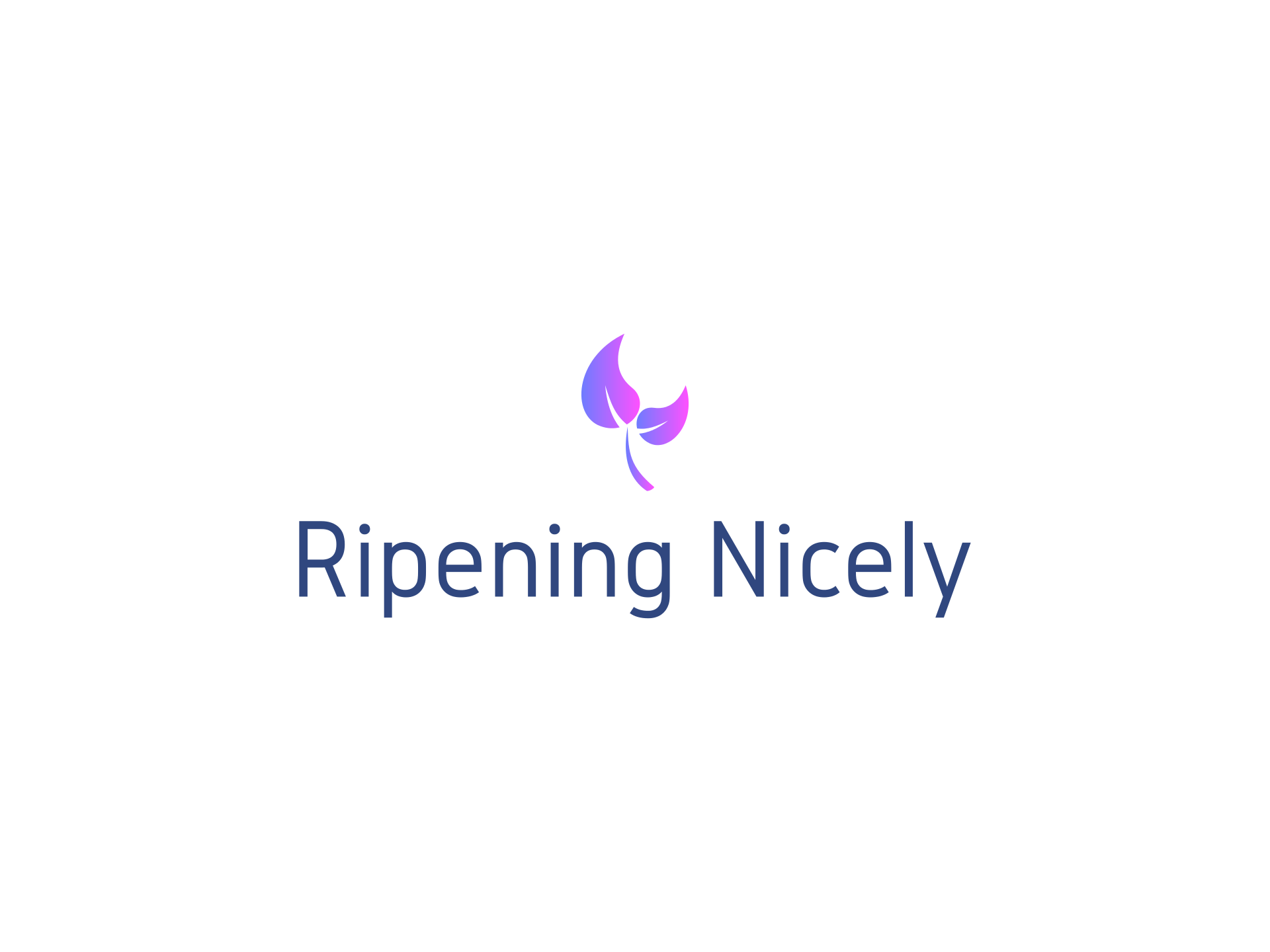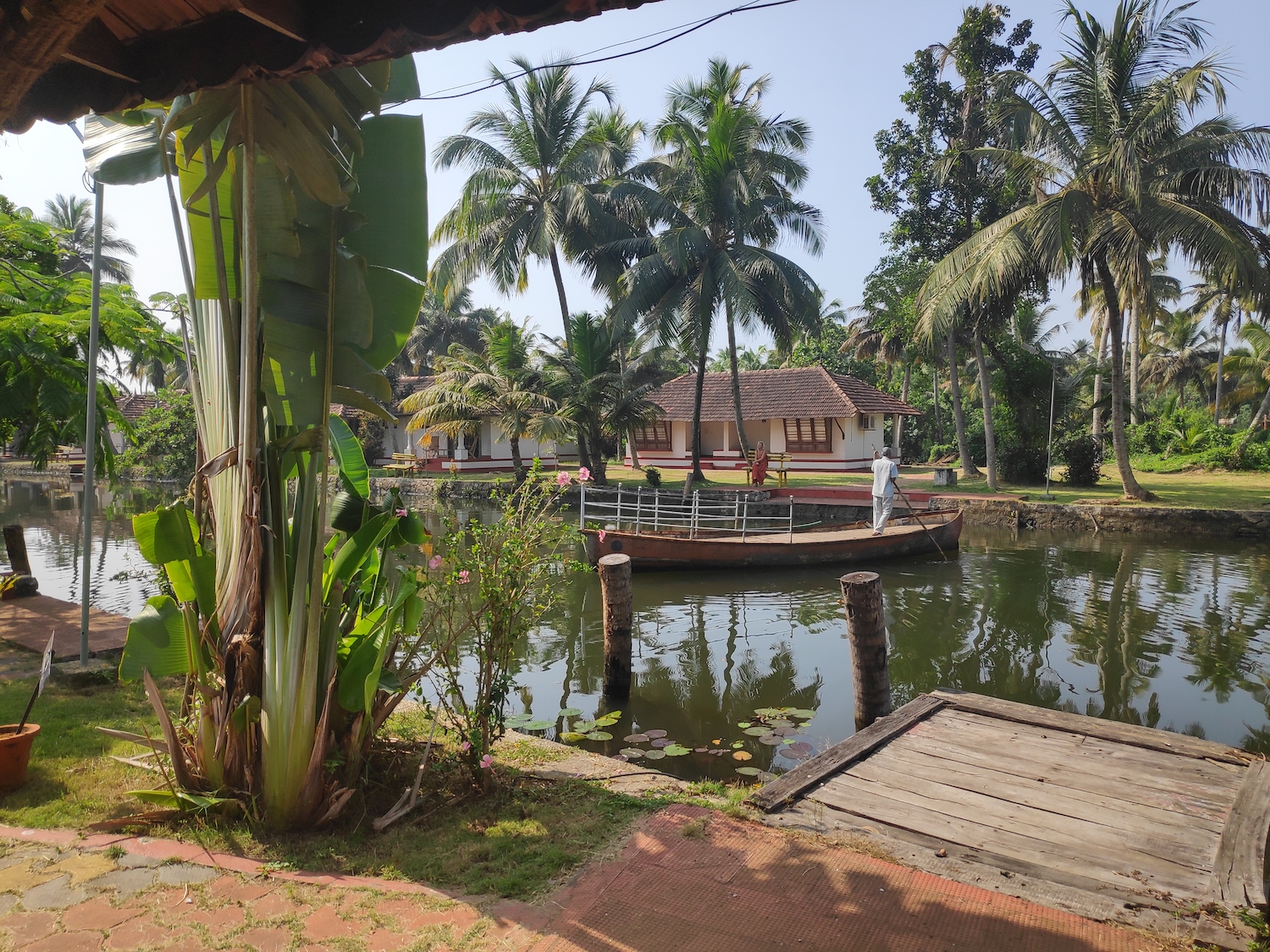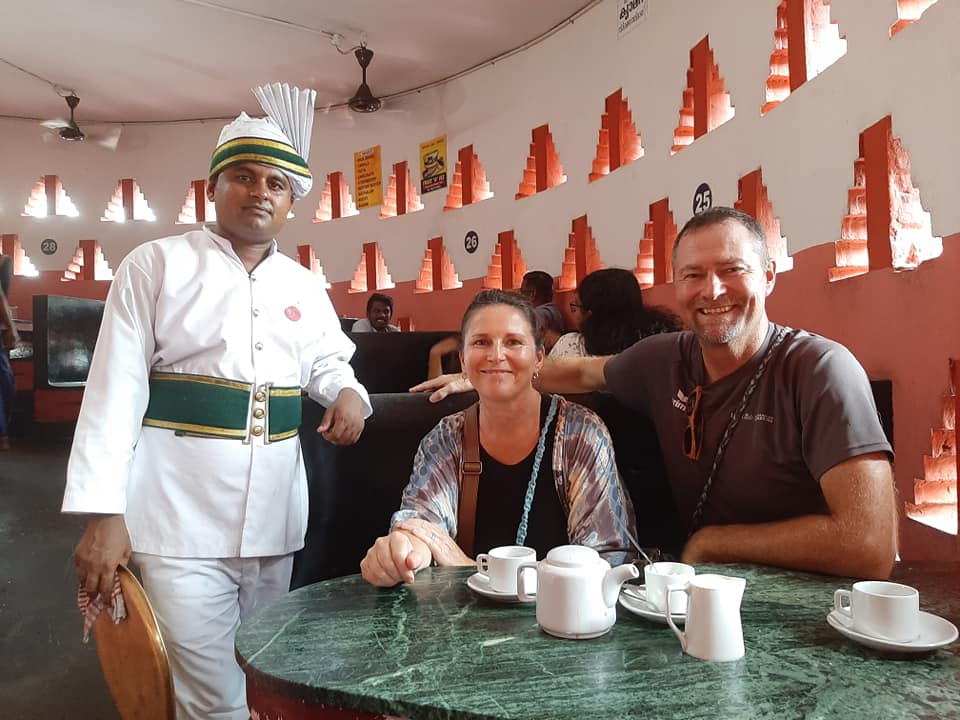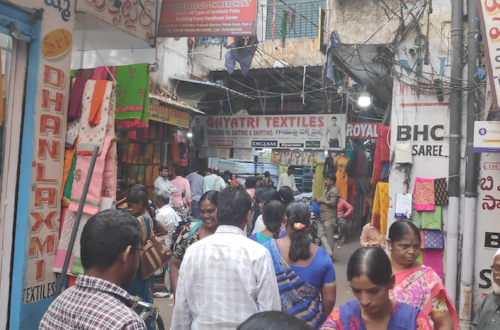
Kerala Backwaters – The Venice of the East
Keen to try out the upmarket version of Indian bus travel we opted for a pre-booked air-conditioned bus rather than a local one for our journey to Alleppy, the start of our Kerala backwaters travel, only to discover that it was warmer and stuffier on the Ac bus than the local one. All part of the learning curve.
Our couple of days in Alleppy were long enough to enjoy this bustling town with most of what we wanted to explore within walking distance, including a 2 km walk to the beach on the opposite of town to where we were staying. There are over 1000 houseboats plying for business to take tourists into the backwaters for day or overnight stays, but we opted for the Tourist Ferry that runs daily between Alleppy and Kollam with an 8-hour journey with optional stops along the way.
The upstairs seating on the tourist boat offered a great view of paddy fields and small homesteads along the way. Women and men were in the water doing their daily wash and houseboats and working boats passed us along the way. The bench-style seating gets a bit uncomfortable after a while, but we had decided to break our journey with a stay at the Coir Village Lake Resort for a few days before continuing to Kollam. We had expected to see some sort of tourist area to see the coir being made but turns out it is much more of a cottage industry with women working from home to turn the coir fibres into rope.
The Ayur Rathna Coir Village Resort is a series of small chalets set on the waterside with small, very basic, boats to get from one part of the resort to another. A range of Ayurvedic treatments and massage are available but also the opportunity to take time out and relax – something we don’t tend to do much of. We enjoyed walks from the resort, including across to the beach a few kilometres away. It was similar in tranquillity to the time we spent in Munnar and good to see this other side of India. The owner of the resort, Shameer, told us that to encourage the local villagers not to throw plastic waste into the backwaters he is paying them to collect it, and he then has the arrangement to recycle it. A great practical solution to help raise awareness but also encourage change.
Back on the tourist boat, we continue our journey to Kollam. There are a couple of stops along the way. One is at the Matha Amrithanadamyi Mission, the ashram of the female guru known as the hugging mother. We had considered this as one of our stopover points. It would definitely have been an experience, but the thought of over 3,500 people within one complex was too daunting. We spoke to a few people who were either heading there or had been there and none of the conversations had convinced me, we opted instead to head straight to Kollam.
Kollam offers a less busy starting point for Houseboat tours into the backwaters as an alternative to Alleppy, but time was too short to explore further. We had arranged for the delivery of a new Chartplotter purchased in Dubai, which by happy coincidence was being bought into India for us by a Dubai based Keralite whose home town was close to Kollam. This resulted in a diversion to a small town called Anchal about 40 km east. This turned out to be an unexpectedly interesting trip meeting with our “mule” Raj and spending time with his family at his home. Their hospitality and warmth were amazing and further confirmation of the generous nature and spirit of the Kerala people. Sadly, we were only able to stay for a couple of hours before getting onto yet another local bus for a 2-night stay in the Kerala capital of Trivandrum.
We had booked a great little homestay called the Ramas Gardens that turned out to be well located for one of the oldest temples in India, the Sree Padmanabhaswamy Temple within easy walking distance. While non-Hindus are not allowed into the inner sanctum of the temple, it is possible to walk around the full exterior perimeter close enough to see the gold plated temple roof. Other highlights of Trivandrum included the Maharaja Swathi Thirunal Palace, and further out of town to the Napier Museum – an art and natural history museum. Despite the name suggesting a potential link to Bryan’s birth town in New Zealand, this was not the case.

Napier Museum 
Maharaja Palace 
Sree Padmanabhswamy Temple
All over India, you find a chain called the Indian Coffee House. These are run as a series of worker cooperatives founded in the late 1950s. One of the most famous of these is the one in Trivandrum due to its iconic architectural design. Its cylindrical shape makes it look a bit like a pigeon coup but it is really fun and quirky inside with a continuous spiral ramp with seats along the curved walls. We tried the house speciality, a “Set coffee” not really knowing what to expect, and received a tar-like pot of coffee that was on the edge of being undrinkable.
Ending our time in Trivandrum, we tried a new mode of transport for the 200km journey back to Kochi. Our first time on the overnight sleeper bus was a great experience. There are no seats on these buses. Costing under $10 each for our 5-hour journey we got a fully flatbed, with good air conditioning and several stops on the way for bathroom breaks and food. Good fun and a really comfortable way to travel.

Where we stayed –
- Boho Homestay, Alleppy
- Ayurrathna Coir Village Resort – https://www.coirvillage.com/
- Nani Hotel, Kollam
- Ramas Garden, Trivandrum
Follow and like us to be notified of future blogs!




















One Comment
Craig Mitchell
Fantastic trip! Emirates could learn a thing or two by studying the sleeper bus!